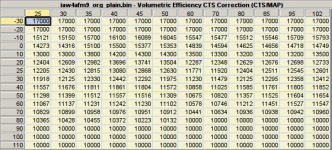If you are using the lower impedance one, the wave form might distort due to too much gain which would effect higher rpm though or too much loading on the input creating a weaker signal? I would have thought the VR sensors would produce a sine wave and squared off in the ECU.
Worth a shot with the resistor but you could do with scoping the signal to compare.
On the Omex, you can set the switch from high to low gain at any rpm. It's normally set at 2k rpm. With the MPI sensor, I get the odd misfire at about 1.5k rpm but have yet to adjust the settings to see if this changes.
Worth a shot with the resistor but you could do with scoping the signal to compare.
On the Omex, you can set the switch from high to low gain at any rpm. It's normally set at 2k rpm. With the MPI sensor, I get the odd misfire at about 1.5k rpm but have yet to adjust the settings to see if this changes.



